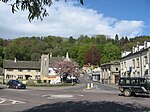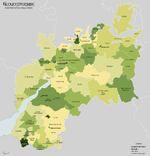Horsley Priory
1080s establishments in England1539 disestablishments in EnglandChristian monasteries established in the 11th centuryMonasteries in GloucestershireUnited Kingdom Christian monastery stubs
Horsley Priory was a medieval, monastic house in Gloucestershire, England. Goda owned an estate at Horsley, in 1066. It was granted to Troarn Abbey by Roger de Montgomery before 1086. The original grant was said to provide for a prior, a monk, and a parish chaplain to reside at Horsley. From those provisions emerged the cell called Horsley Priory. Troarn Abbey exchanged the priory with Bruton Priory for lands in Normandy in 1260. The priory of Horsley ceased to exist before 1380. Horsley manor was retained by Bruton Priory, until the Dissolution of the Monasteries in 1539. In 1541, Horsley was granted to Thomas Seymour.
Excerpt from the Wikipedia article Horsley Priory (License: CC BY-SA 3.0, Authors).Horsley Priory
The Street,
Geographical coordinates (GPS) Address Nearby Places Show on map
Geographical coordinates (GPS)
| Latitude | Longitude |
|---|---|
| N 51.680545 ° | E -2.235755 ° |
Address
The Street
GL6 0PU , Horsley
England, United Kingdom
Open on Google Maps








